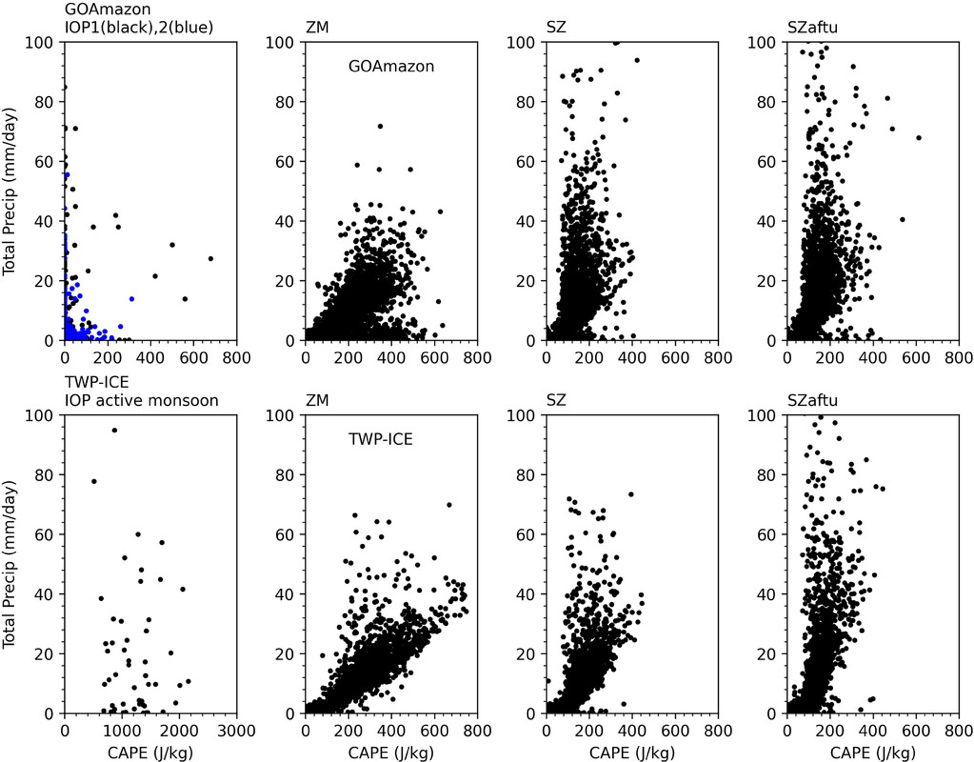Evaluating climate impacts of convective cloud microphysics against ARM and satellite observations
Submitter
Fu, Qiang — University of Washington
Liu, Xiaohong — Texas A&M University
Area of research
General Circulation and Single Column Models/Parameterizations
Journal Reference
Science
Global climate models have started treating convective clouds with detailed cloud microphysics parameterizations. However, the representations of convective cloud microphysical processes are often based on those for large-scale stratiform clouds. For example, the commonly used auto-conversion and accretion parameterizations developed for stratocumulus clouds were also used in convective cloud microphysics parameterization, which might underestimate the rain production in convective clouds. In this study, we further improved several aspects of convective cloud microphysics parameterizations in the global climate model and evaluated their impact on climate simulations based on observations from the U.S. Department of Energy Atmospheric Radiation Measurement (ARM) TWP-ICE and GOAmazon field campaigns and various satellites.
Impact
Improving the parameterization of convective cloud microphysics remains one of the major tasks in global climate model (GCM) developments. Our model development efforts involve convective microphysics parameterizations including the treatments of ice and snow particles sedimentation, rimed ice formation and production, convective snow detrainment, and rain initiation and generation. We assessed the simulated global climate with our modified parameterizations by using ARM ground-based and satellite observations, and found substantial improvements on simulations of cloud radiative forcing, graupel microphysics, convective cloud ice amount, and tropical precipitation over the default settings. These improvements set a better stage for future studies of convective cloud processes and their interactions with the large-scale environment and aerosols.
Summary
We improved the treatments of convective cloud microphysics in the GCM by 1) implementing new terminal velocity parameterizations for convective ice and snow particles, 2) adding graupel microphysics, 3) considering convective snow detrainment, and 4) enhancing rain initiation and generation rate in warm clouds. We evaluated the impacts of improved microphysics on simulated global climate, focusing on simulated cloud radiative forcing, graupel microphysics, convective cloud ice amount, and tropical precipitation. Compared to the simulations with the default convective microphysics, the too-strong cloud shortwave radiative forcing due to excessive convective cloud liquid is largely alleviated over the tropics and midlatitudes after rain initiation and generation rates are enhanced, in better agreement with the Clouds and Earth's Radiant Energy Systems Energy Balanced and Filled (CERES-EBAF) estimates. Geographic distributions of graupel occurrence are reasonably simulated over continents while the graupel occurrence remains highly uncertain over oceanic storm-track regions. When evaluated against CloudSat–CALIPSO observations, the overestimation of convective ice mass is alleviated with the improved convective ice microphysics, among which adding graupel microphysics and the accompanying increase in hydrometeor fall speed play the most important role. The common biases of overestimating light rain frequency but underestimating heavy rain frequency in GCMs are mitigated, largely due to enhancements in warm rain production rates. Furthermore, little apparent dependence of total precipitation on CAPE from the model simulations with the explicit convective microphysics scheme was supported by observations during the intensive observing periods of the TWP-ICE and GOAmazon campaigns.


